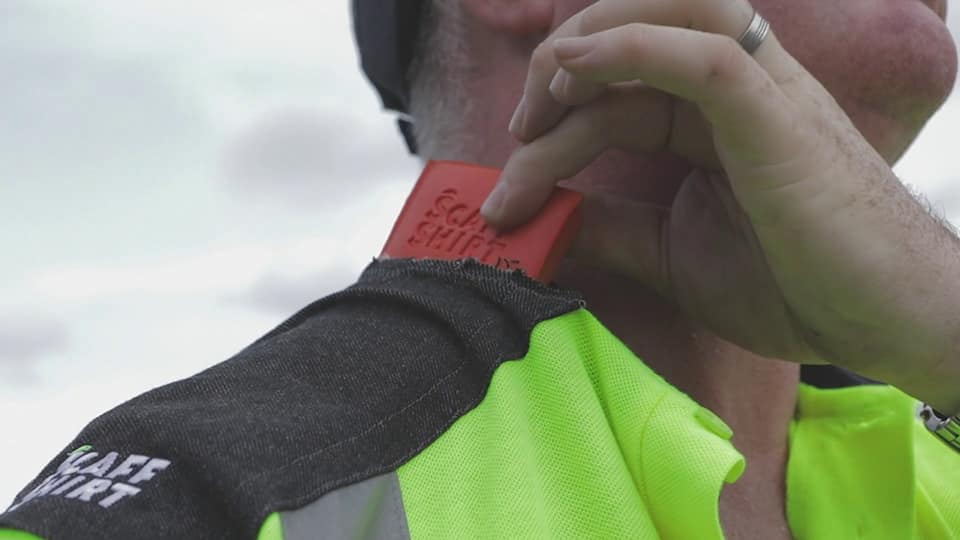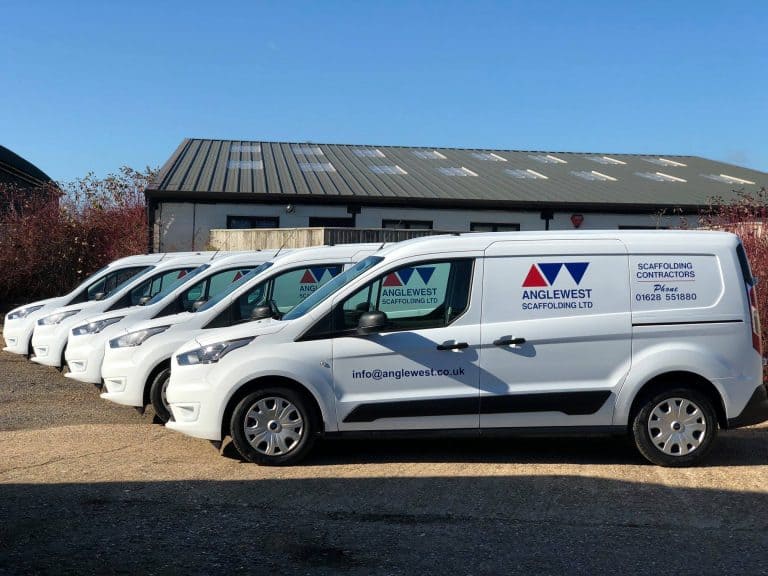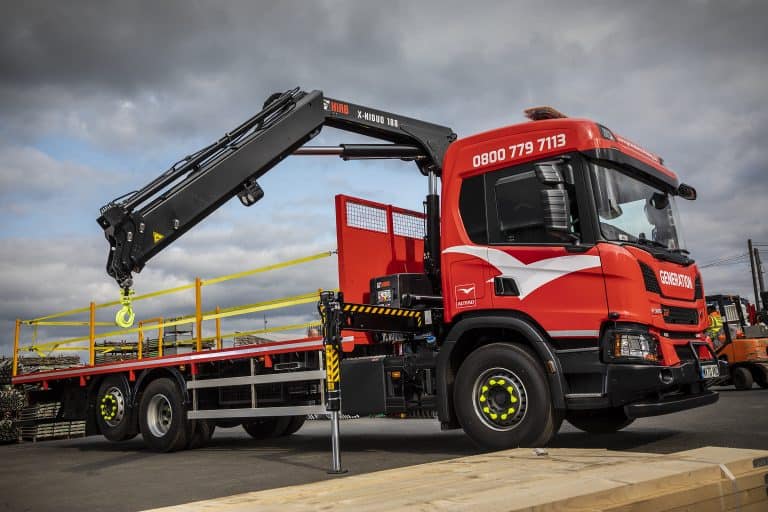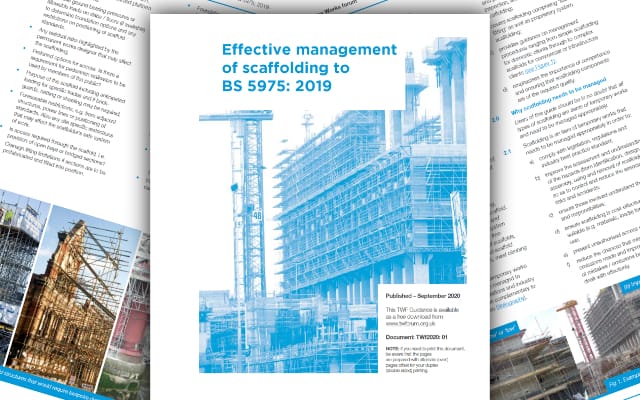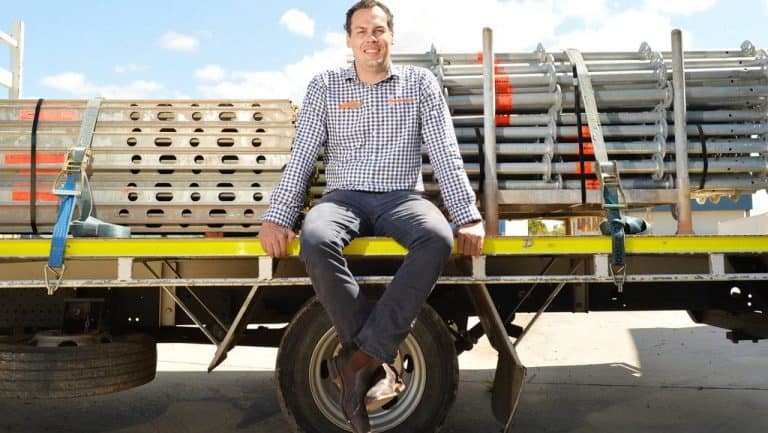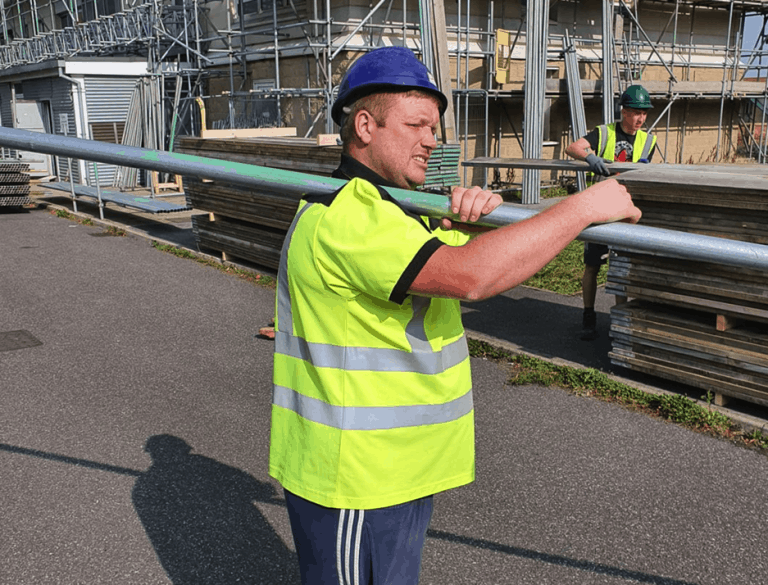Builders report busy summer of home upgrades, says FMB
Strong levels of demand for repair and maintenance works saw builders report a busy summer, according to a new survey released today by the Federation of Master Builders (FMB).
Key findings from the FMB State of Trade Survey, the only survey of its kind to track the experience of small to medium-sized (SME) firms in the building industry, include:- 1 in 2 builders (47%) reported increased workloads in the summer months;
- More than 2 in 5 (42%) predict higher workloads in the autumn;
- More than three quarters (78%) of builders said they expect material costs to increase over the next two months;
- Almost 1 in 5 (17%) SMEs is planning to increase the number of general labourers on-site in the months ahead; and
- Almost 1 in 5 (16%) SMEs is planning to increase the number of specialist tradespeople on site.
AIF submits official representation to HM Treasury
The Access Industry Forum (AIF) has submitted an official representation to HM Treasury as part of the Comprehensive Spending Review.
The submission calls on the Government to introduce enhanced reporting of falls from height without the additional financial or administrative burden for Government, HSE or industry through the Reporting of Injuries, Diseases and Dangerous Occurrences Regulations 2013 (RIDDOR). The AIF has suggested that the current reporting rules allow for a large degree of individual interpretation through the use of a ‘free text box’, where the person reporting is asked to describe in their own words what has occurred. This results in mixed data which often does not contain enough detail of the incident which means that it is not as accurate as it could be. AIF says this represents a missed opportunity to improve health and safety policy by reducing the number of accidents from working at height. The AIF would like to see this ‘free-text box’ replaced with simple drop-down menus in order to improve the quality of data. At a minimum, this enhanced reporting would record the scale of a fall, the method used (e.g. ladder, scaffolding etc.) and the circumstance of the fall. Better reporting would address concern within the industry that improvements in safety are hampered by a lack of empirical data and an understanding of the root causes of falls from height. Furthermore, comprehensive information would better inform the policies of Government and businesses, and the guidance issued by associations, and the regulations developed by regulators. Read the full AIF submission here The Access Industry Forum is comprised of the 11 leading industry and certification bodies committed to advancing safety in the working at height sector. Established in 2004, the AIF supports codes of good practice, equipment standards, training, education and knowledge.Scaffolding giant invests in new generation cranes
One of the UK’s largest scaffolding suppliers has invested in two Hiab 188B-2 Hi Duo Cranes on a Scania chassis to boost its 70-strong fleet.
Generation UK, part of the global Altrad Group, has 17 locations across the UK and supplies commercial scaffolding and access solutions to major construction developments. The brand-new hi-tech cranes are operated by remote control and are connected with Hiab’s HiConnect technology which tracks real-time data on crane usage and operator performance. Jamie Whale, national fleet and transport manager for Generation UK said the investment would help the business retain its Silver Fleet Operator Recognition Scheme (FORS) accreditation. “As the UK’s largest supplier of scaffolding we deliver materials to some of the biggest construction sites which have stringent requirements around site safety,” he explained. “Commercial sites require lifting plans from delivery suppliers like us and we often have site-specific guidelines to adhere to, which helps to manage risk and improve health and safety. “Space can be challenging and we often have a small window to deliver, so we need to make sure we can deliver safely and swiftly; investing in the right equipment helps us to do that. “Our business needs to evidence year on year reductions in our carbon footprint to maintain our Silver FORS accreditation. The HiConnect software which monitors crane usage will play a major role in that.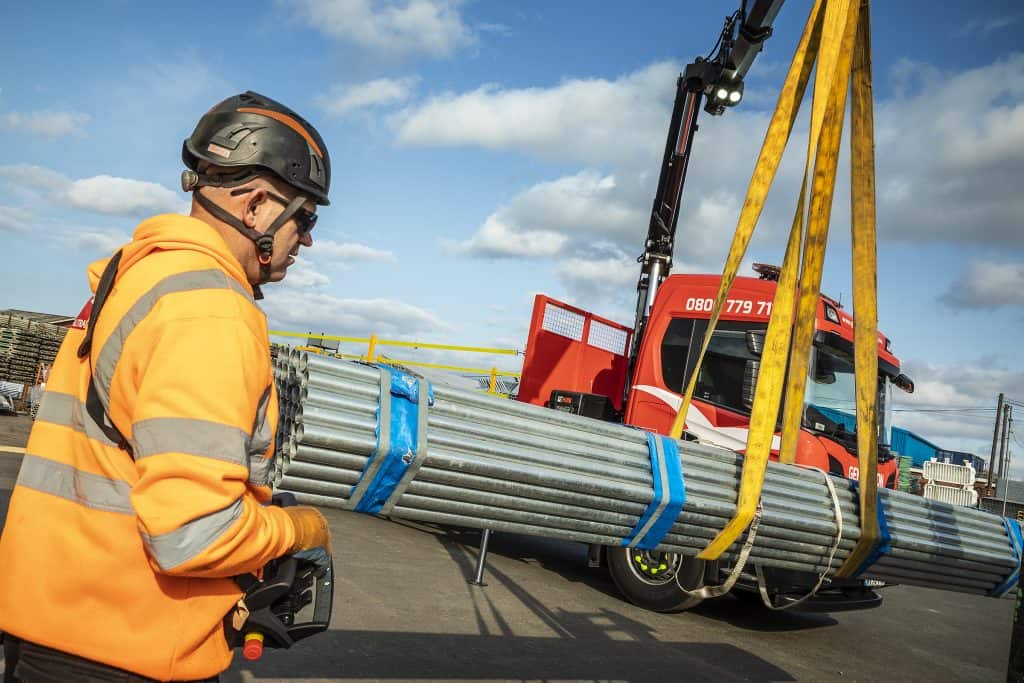 “The Silver FORS accreditation is a requirement for several of our customers, so I’m really pleased we have a tool which makes it easier for us to evidence our sustainable credentials and continue operating on those sites.
“The platform gives us real-time insights on operator performance and actual crane usage, we fully expect to reduce our fuel emissions over time.”
David McDonald, northern key account manager and area sales manager said: “These two cranes are perfectly-suited to Generation UK’s needs. The remote-control operations combined with HiConnect software gives incredible visibility for the operator and the fleet manager.
“Jamie explained to us that reducing downtime was a priority for Generation UK. Our ProCare essential service contract combined with HiConnect will make sure trucks and cranes are on the roads for as long as possible.
“HiConnect’s real-time operational data pinpoints when maintenance is due and our engineers can connect to the crane to troubleshoot any issues ahead of a call out, giving us the opportunity to respond quicker to maintenance and repair needs.
“We know it’s possible that HiConnect can calculate productivity cost savings of over £1,000 per crane for one year based on idling time alone, which I’m confident Generation UK will benefit from.”
“The Silver FORS accreditation is a requirement for several of our customers, so I’m really pleased we have a tool which makes it easier for us to evidence our sustainable credentials and continue operating on those sites.
“The platform gives us real-time insights on operator performance and actual crane usage, we fully expect to reduce our fuel emissions over time.”
David McDonald, northern key account manager and area sales manager said: “These two cranes are perfectly-suited to Generation UK’s needs. The remote-control operations combined with HiConnect software gives incredible visibility for the operator and the fleet manager.
“Jamie explained to us that reducing downtime was a priority for Generation UK. Our ProCare essential service contract combined with HiConnect will make sure trucks and cranes are on the roads for as long as possible.
“HiConnect’s real-time operational data pinpoints when maintenance is due and our engineers can connect to the crane to troubleshoot any issues ahead of a call out, giving us the opportunity to respond quicker to maintenance and repair needs.
“We know it’s possible that HiConnect can calculate productivity cost savings of over £1,000 per crane for one year based on idling time alone, which I’m confident Generation UK will benefit from.” Temporary Works Forum launches new scaffolding guidance
The Temporary Works Forum (TWf) has published new important guidance on the Effective Management of scaffolding to BS 5975: 2019.
The 26 paged guidance document which is available as a free download from the TWf (LINK: HERE) applies to organisations and individuals involved in specifying, procuring, designing, constructing and managing scaffolds.
It covers all ‘tube and fitting’ scaffolds as well as proprietary system scaffolds.
The guidance recommends how temporary works such as scaffolding should be managed to comply with legislation, regulations and industry best practice standards. It is complementary to other existing guidance from BSI, NASC, NFDC and CISRS.
Guidance is also provided on management procedures ranging from simple scaffolding for domestic clients through to complex scaffolds for commercial or infrastructure clients. It additionally emphasises the importance of competence and ensuring that scaffolding components are of the required quality.
Ben Beaumont, Director of TWf, co-author of the guidance and convenor of the TWf working group said:

“The guide is aimed at bringing together the management procedures required by BS 5975:2019 for all aspects of temporary works with the many good practices that scaffolding contractors and people managing scaffolding already do. The existing good practices typically come from the requirements of the Working at Height Regulations, and are second nature for many in our industry. However, the requirements of BS 5975 are less well known and often implemented less effectively, but equally important.
It is worth remembering that NASC TG20:13 has always stipulated that scaffolding should be managed in accordance with BS 5975, and now this guide gives industry a clear way of doing this.”
“The guide provides information on key roles including that of the Designated Individual (DI), an appointed role that all organisations involved in temporary works should have, the Temporary Works Coordinator (TWC) and the Temporary Works Supervisor (TWS). The guide references who is likely to undertake these roles in a scaffolding contracting business and their key responsibilities.
Key sections relating to design include ‘when a scaffold needs designing’, ‘examples of information to include on a design brief’ and the ‘procedure for managing the design of scaffolding’. One section that I hope readers of the guide will find particularly useful is the procedural flowchart in appendix 3 – this provides a clear method for managing scaffolding effectively.
The requirement for this guidance document was identified by members around five years ago, initial drafting was put on hold when the process for updating BS 5975 (into the 2019 version) started, and then we recommenced work on the document once BS 5975:2019 was published. The TWF working group, authors and I are really pleased with the final document. We wanted to make the guide as user-friendly and straight forward to read as possible, and I think we’ve achieved that.
I would like to thank everyone who contributed to the guide at some stage during it’s production, particularly Ray Filip and David Thomas who co-authored the guide, I really do appreciate the hard work that many people put in.”
Ben added: “I would like to emphasise that this document is FREE for everyone. This is in keeping with the founding principles of the Temporary Works Forum, as my fellow members and directors continue to promote best practice in temporary works.”
Outside of his commitments to the TWF, Ben Beaumont is a Director of Richter and the Managing Director of 48.3 – leading consultants in temporary works, civil, structural and geotechnical engineering.
UK construction sees sharp rise in activity for September
Latest data from PMI has signalled another sharp increase in UK construction activity in September.
According to the latest monthly survey from the Purchasing Managers Index (PMI), September saw the quickest rise in new construction business since before the COVID lockdown. Firms have increased their purchasing activity at the quickest pace for nearly five years. And employment continued to fall, but the rate of job shedding eased, the survey found. The headline seasonally adjusted IHS Markit/CIPS UK Construction Total Activity Index registered 56.8 in September, up from 54.6 in August. Any figure above 50.0 indicates growth of total construction output. The latest reading pointed to a reacceleration in the rate of activity growth and a sharp increase overall. The strongest performing category was home building, where firms registered a sharp expansion in activity for the fourth month running. Work undertaken on commercial projects also rose strongly, increasing at quickest pace for over two years. Meanwhile, civil engineering activity fell for the second month running and at the sharpest rate since May. New orders rose for the fourth time in as many months, with panellists continuing to mention a release of pent-up demand. In fact, the latest increase was the strongest since just before the escalation of COVID pandemic. Eliot Kerr, Economist at IHS Markit, which compiles the survey said: “Following August’s slowdown, growth in UK construction activity rebounded strongly in September. There were faster increases in activity in both the housing and commercial sub-sectors, which more than offset a sharper decline in civil engineering work. “Forward-looking indicators point to a sustained rise in activity, with new work increasing at the quickest pace since before the lockdown and sentiment towards the 12-month outlook at its strongest for seven months. “Meanwhile, latest PMI data pointed to another fall in employment numbers across the UK construction sector. That said, the rate of job shedding eased substantially, while building firms upped their purchasing activity in a further sign of encouragement for the months ahead.”TRAD Continually Developing ALTRIX Temporary Roofing System
Strong, lightweight temporary weather protection system benefits from professional insight
- Fast to erect, saving time and money on site
- Can be supported by almost any scaffold type
- Particularly efficient when used with PLETTAC METRIX
- Strong, all aluminium system
- Fully metric system is versatile and cost-effective
- Tailored bracing patterns available
Are you in love with your customers?
 There is no right or wrong answer or quick solution on which industries are the best (this debate has been going on for hundreds of years), they all have their pro’s and con’s and suit different scaffolding businesses in different ways.
For example, larger corporate scaffolding companies have many different levels of staff and supervision with high business overheads so it can often take a long time to make a decision and they generally charge a higher rate to cover the additional costs whereas a smaller company doesn’t have the high overheads and can charge a lower rate and still make the same profit.
The local builder replacing the gutter on a two-story house cannot justify paying the extra money for the larger corporation when the smaller company is able to make decisions quickly and provide a more personalized service, at a lower price. At the end of the day the scaffolding from both companies is going to allow the builder to complete his work safely but understanding the client will give you perspective into what is important to them.
Many business owners are afraid to say they ‘specialize’ in one area because they don’t want to close themselves off from other opportunities. Specializing in one market doesn’t mean you can never do work in other markets, it means that you know who your best customers are and you build your business strategy to take full advantage of the opportunities you have.
The larger corporate scaffolding company can still supply and install the scaffolding for the local builder but their time and resources are better suited to the complex suspended scaffolding hung from the bridge because they have the processes and resources to complete the high-risk work and generally have a financial ability to complete the higher value projects that can often take 60-90 days to be paid from the client.
Think about your organization through the eyes of your customer and be truly clear of who your “ideal” customer is. A great exercise to do is sit down with your team and profile who your ideal customer really is and ask yourselves the following questions:
There is no right or wrong answer or quick solution on which industries are the best (this debate has been going on for hundreds of years), they all have their pro’s and con’s and suit different scaffolding businesses in different ways.
For example, larger corporate scaffolding companies have many different levels of staff and supervision with high business overheads so it can often take a long time to make a decision and they generally charge a higher rate to cover the additional costs whereas a smaller company doesn’t have the high overheads and can charge a lower rate and still make the same profit.
The local builder replacing the gutter on a two-story house cannot justify paying the extra money for the larger corporation when the smaller company is able to make decisions quickly and provide a more personalized service, at a lower price. At the end of the day the scaffolding from both companies is going to allow the builder to complete his work safely but understanding the client will give you perspective into what is important to them.
Many business owners are afraid to say they ‘specialize’ in one area because they don’t want to close themselves off from other opportunities. Specializing in one market doesn’t mean you can never do work in other markets, it means that you know who your best customers are and you build your business strategy to take full advantage of the opportunities you have.
The larger corporate scaffolding company can still supply and install the scaffolding for the local builder but their time and resources are better suited to the complex suspended scaffolding hung from the bridge because they have the processes and resources to complete the high-risk work and generally have a financial ability to complete the higher value projects that can often take 60-90 days to be paid from the client.
Think about your organization through the eyes of your customer and be truly clear of who your “ideal” customer is. A great exercise to do is sit down with your team and profile who your ideal customer really is and ask yourselves the following questions:
- If we only had to work for one type of customer for the rest of our business lives, who would they be?
- What type of work do they do?
- What problems do they have that you can solve?
- What are the most important things they look for in a scaffolding contractor?
- What makes us different from our competition?
- Does our customer know what makes us different from our competition?
- Is our brand and marketing material the same as everyone else’s or does it separate us from the rest of the field?
NASC launch dedicated careers portal
UK scaffolding trade body the NASC has today launched a dedicated website at encouraging would-be employees of all ages and backgrounds to take up a position within the scaffolding industry.
The Scaffolding Careers website features a number of detailed overviews of a variety of job roles within the industry, from labourer and scaffolding operative through to SHEQ manager and estimator. Each overview provides information such as what the role entails, what the responsibilities are and what key skills are advantageous. The trade body has also launched a recruitment jobs board for its own members to feature vacancies currently on offer. Henry Annafi, NASC Training Officer, said: “As the trade body for access and scaffolding in the UK, the NASC has for many years led the way in the promotion of the industry to potential job seekers. “These efforts have been stepped up recently and we’re now actively working with the Ministry of Justice, Ministry of Defence, Department for Work and Pensions and various education providers to bring more people from all walks of life into the industry. “The scaffolding careers website will significantly boost the efforts as it gives us for the very first time a dedicated place packed full of relevant information to point job seekers to. We would encourage the whole industry to refer job seekers to the website.”Scaffolders Scaffshirt launch date revealed
Gaaard Protection has announced its worldwide launch date for its scaffolders Scaffshirt which it hopes will revolutionise the scaffolding and allied construction industries.
A few months ago Scaffmag was first to report on how the Scaffshirt offers the highest standards of protection for scaffolders carrying loads on their shoulders. Now its Bradford based makers have revealed its launching the product this week. The Scaffshirt is a versatile high quality hi-vis protective work-wear shirt with weight-bearing padded shoulders for supporting shoulder joints for example, when carrying heavy items such as scaffolding tubes and boards. The pads are manufactured from 3D-sculptured EVA compression padding that sits inside a pocket on the shirt, which is stitched securely to the top of the shoulder. The pockets are waterproof, and shirts are supplied with a pocket on each shoulder. The firm has stated the Scaffshirt meets current Health and Safety visibility requirements needed for safe site work.